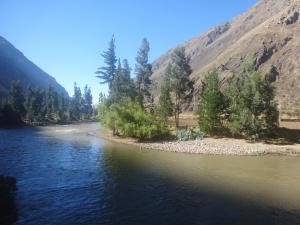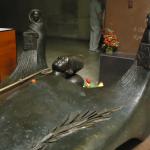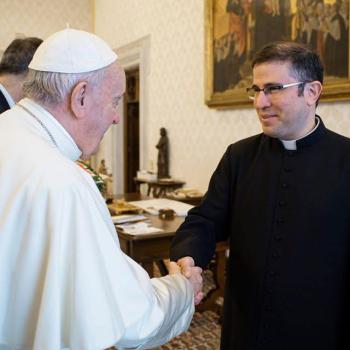As a child growing up in Peru, I would see majestic mountains all the time. I could see large mountains down the street from my house even though I lived just about two or three miles from the Pacific Ocean. The highway to my house had the ocean on the right side and mountains on the left. Road trips often involved driving through dangerous mountain passes and seeing strikingly beautiful mountain scenery. Sometimes my dad would stop on the side of the road and let us out of the car to run around. We would head straight up the giant sand mountains of Peru’s coast. I think this was one of my dad’s hidden tricks: have the kids run and get tired so they would fall asleep during the long car rides.
Whenever we gaze at mountains, great wonder and awe stir up deep within us… especially if we’re standing on top of one. Mountains remind us of how small we are… they remind us that we are not the center of the universe, that we are rather insignificant, and something greater than us exists out there.
I believe mountains reveal an aspect of the glory of God – these mighty and imposing formations speak of God’s power and majesty.
These emotions evoked by mountains always come into my mind when I read the passage of the Transfiguration. Jesus took Peter, John, and James to a mountain top, tradition tells us it was Mount Tabor near Nazareth, and there God’s power and majesty was revealed in Jesus’ Transfiguration.
Why does the second Sunday of Lent always take us to the mountaintop? Last week we were with Jesus in the desert fasting and praying, but today the Liturgy takes us to a mountain top where Jesus is glorified. What is the message?
Lent is a time of introspection and conversion. It began with ashes on our foreheads and the words ‘remember you are dust and to dust you will return.’ During Lent we fast and pray, we make sacrifices and perform actions or disciplines to help us root out bad habits and sin from our lives.
Lent overall is a time when we focus on our need for God… we are reminded of our ever present need for mercy and conversion.
Sometimes however we may become too harsh on ourselves. We often grab onto past sins and failures, and cannot let go of them (even when we know that God has forgiven us). We allow our past to keep us down. We may ask ourselves, “how can God really love me if I have done this or that? Has He really forgiven me? I keep falling into the same sin, perhaps I’ll just give up, there’s no hope.” Or we say, “It’s so much harder now to pray, it’s not how it used to be, I guess I’ll just stop.”
All these thoughts and focus on our sins and mistakes must be balanced with the Transfiguration.
The Transfiguration prepared the disciples for thoughts of discouragement, despair and hopelessness that were to come. The Transfiguration was to remind them that there was hope in the darkness of Jesus’ crucifixion. The Transfiguration gave them the hope that allowed them to remain faithful till the resurrection.
During Lent, when we look at our past or present sins, we need to recall the transfiguration moments of lives– those moments of our past when we have felt Jesus particularly close. Those moments when we have seen Him transfigured before our very eyes:
It could be your wedding day, the birth of your children, getting that long-awaited promotion, the blessing no one got hurt in an accident, a good confession, a long awaited family reunion, the heaven-sent solution to a pressing problem. We have all experienced so many blessings throughout life!
When we feel Jesus distant, when we feel discouraged, we need to remember the blessings He has given us in the past. We are never alone, because Jesus is always with us. Treasure and remember these moments of transfiguration, moments of blessing, and recall them especially when things get tough.
The Lord gives us the Transfiguration to give us hope throughout the journey of life. In the midst of our struggles and sins, Jesus transfigures himself before us, filling us with hope. Though Lent is a time to focus on our need for repentance, these are forty days that eventually lead to the glorious and joyful resurrection.
As Jesus comes into our midst here and now on the mountaintop of this altar, and then enters into our body and soul to transfigure us, we ask Him to help us during this Lent – that at the end of these forty days we may be renewed and transformed, ready to celebrate joyfully His Resurrection.
Pictures are mine, all rights reserved. Train ride from Cusco to Machu Picchu, Peru, 2015.















